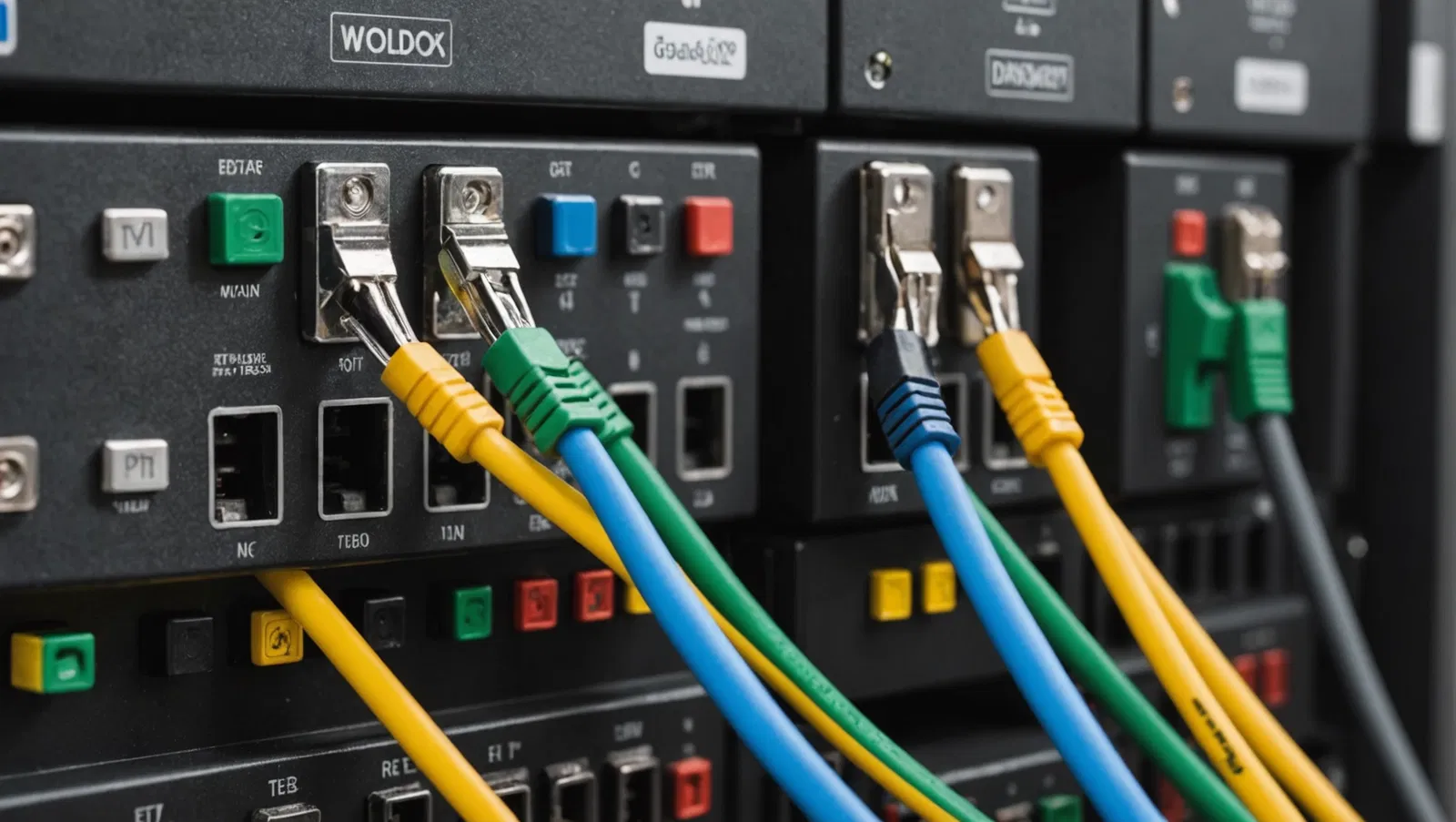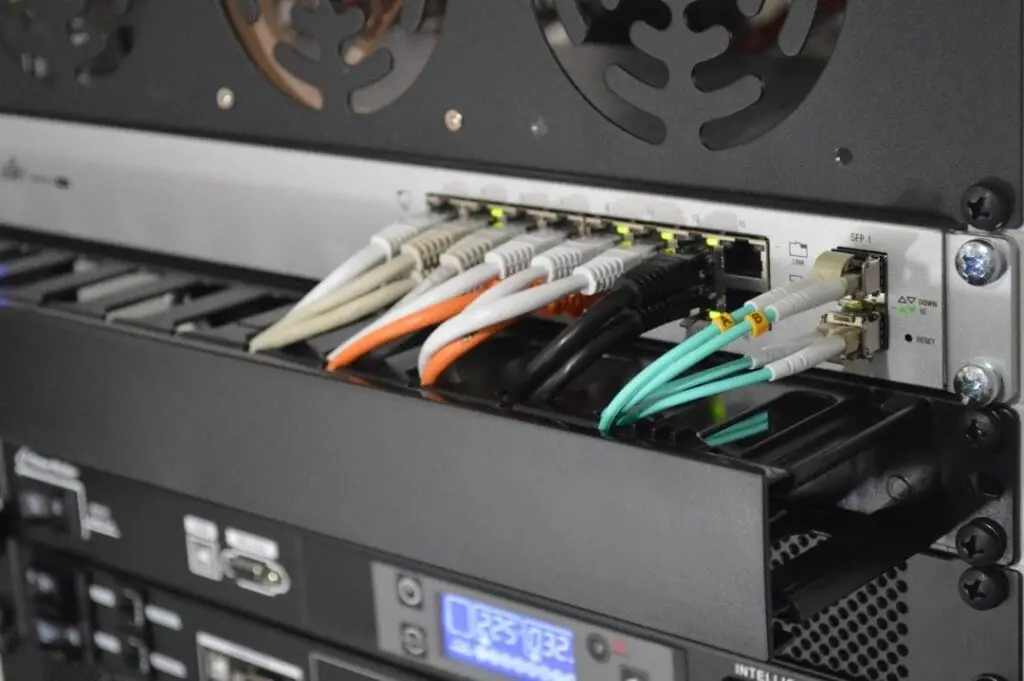Importance of Secure Data Cabling Solutions

A reliable and secure network is essential for businesses to thrive. One critical component of a secure network infrastructure is the data cabling system. Efficient data cabling solutions not only ensure seamless connectivity but also play a pivotal role in safeguarding sensitive business information. This introduction will explore the significance of secure data cabling solutions in fortifying your business’s network infrastructure and maintaining a competitive edge in the market.
Benefits of Data Cabling Solutions
Businesses today rely heavily on robust data cabling solutions to support their operations in the digital age. These solutions provide a wide range of advantages that contribute to the overall efficiency, security, and scalability of a company’s digital infrastructure. Let’s delve deeper into the key benefits of data cabling solutions:.
Enhanced Security
A well-structured data cabling system plays a pivotal role in enhancing security measures within a business environment. By implementing secure cabling protocols and infrastructure, organizations can significantly reduce the risk of unauthorized access and potential data breaches. This is crucial in safeguarding sensitive information and maintaining compliance with data protection regulations. Additionally, advanced data cabling solutions often incorporate encryption and monitoring features to further fortify the security of the network.
Reliable Connectivity
The importance of reliable connectivity cannot be overstated in today’s fast-paced business landscape. Data cabling solutions offer a stable and consistent network connection, thereby minimizing the occurrence of downtime and communication disruptions. This reliability is essential for sustaining high productivity levels, seamless operations, and seamless collaboration among team members. Furthermore, modern data cabling solutions also support technologies such as Power over Ethernet (PoE), enabling the seamless integration of various devices and systems within the network infrastructure.
Scalability and Efficiency
As businesses expand and technological advancements continue to reshape the corporate landscape, the scalability of data infrastructure becomes a critical consideration. Data cabling solutions provide the flexibility to easily accommodate the evolving needs of a growing business. Furthermore, an efficiently designed cabling system minimizes clutter and reduces maintenance requirements, ultimately streamlining operations and cutting down on associated costs. The implementation of structured cabling, which organizes and standardizes the cabling system, enhances efficiency and simplifies future expansions or modifications.
Future-Proofing and Adaptability
Investing in data cabling solutions also future-proofs a company’s infrastructure, ensuring it can adapt to emerging technologies and business needs. A well-designed cabling system allows for seamless integration of new devices and technologies, thereby avoiding the need for extensive overhauls or disruptive reconfigurations. Moreover, it facilitates the adoption of emerging trends such as Internet of Things (IoT) and cloud-based services, positioning the business for continued growth and innovation.
The benefits of data cabling solutions extend far beyond mere connectivity. They contribute to the overall resilience and adaptability of a business’s digital infrastructure, offering improved security, reliable connectivity, scalability, efficiency, and future-proofing. By investing in robust cabling infrastructure, organizations can lay a strong foundation for their digital operations, ensuring they remain competitive in today’s technology-driven landscape.
Types of Data Cabling Solutions
Structured Cabling
Structured cabling is a standardized architecture that provides a comprehensive telecommunications infrastructure. It involves the use of smaller, standard elements that are organized in a structured way. This type of cabling supports data, voice, and various management systems. Structured cabling is crucial for ensuring seamless connectivity and efficient data transfer within an organization’s network infrastructure. It simplifies the management of multiple data types and allows for easy troubleshooting and maintenance.
Fiber Optic Cabling
Fiber optic cabling utilizes glass or plastic threads to transmit data. It offers higher bandwidth and can transmit data over longer distances compared to copper cabling. Fiber optic cabling is immune to electromagnetic interference and is ideal for high-speed data transmission. With the increasing demand for high-speed internet and large data transfers, fiber optic cabling has become integral in supporting the ever-growing bandwidth requirements of modern networks. It is also essential for powering technologies like cloud computing, video conferencing, and high-definition multimedia streaming.
Ethernet Cabling
Ethernet cabling is commonly used for local area networks (LANs) and wide area networks (WANs). It is the most prevalent type of cabling used for connecting devices within a network. Ethernet cabling comes in various categories, such as Cat5e, Cat6, and Cat6a, each offering different levels of performance and data transmission speeds. The evolution of Ethernet cabling has led to advancements in data transmission rates, enabling faster and more reliable network connections. Cat6 and Cat6a, for instance, support higher bandwidths and are well-suited for demanding applications like virtualization, server clustering, and network-attached storage.
Importance of Data Cabling Solutions
The selection of the most suitable data cabling solution is imperative for building a robust and efficient network infrastructure. Organizations must consider several factors when choosing the appropriate cabling solution for their specific needs. Besides data transfer speed and bandwidth requirements, scalability and future technological advancements also play crucial roles in determining the best cabling option. Scalability is essential for accommodating potential growth in network demands, ensuring that the cabling infrastructure can support evolving technologies and increased data traffic. Furthermore, future-proofing the cabling infrastructure is vital to minimize the need for frequent updates or replacements, ultimately reducing maintenance costs and disruptions to operations.
Enhanced Performance and Reliability
Investing in high-quality data cabling solutions not only ensures high-speed and reliable data transmission but also contributes to enhanced network performance and overall reliability. Modern businesses rely heavily on consistent network connectivity to support various operations, from cloud-based applications to real-time data analytics. The right cabling solution can optimize network performance, reduce latency, and minimize downtime, thereby improving productivity and user satisfaction. Moreover, reliable data cabling minimizes the risk of network failures and data loss, providing a stable and secure foundation for digital communications and operational continuity.
Adaptability to Technological Advancements
As technology continues to evolve at a rapid pace, data cabling solutions must be adaptable to accommodate emerging innovations and changing industry standards. Flexible cabling infrastructures that can easily integrate new technologies and support advanced applications are essential for staying competitive in today’s dynamic business landscape. By adopting scalable and adaptable cabling solutions, organizations can future-proof their network infrastructure, positioning themselves to capitalize on emerging technologies without requiring extensive overhauls or disruptions to existing operations.
Conclusion
The significance of selecting the right data cabling solution cannot be overstated. Whether it’s structured cabling, fiber optic cabling, or Ethernet cabling, each type plays a crucial role in establishing a resilient and high-performing network environment. By considering factors such as scalability, reliability, adaptability, and future-proofing, organizations can make informed decisions when investing in their cabling infrastructure, ultimately laying the groundwork for sustainable growth and technological innovation.
Importance of Cybersecurity in Data Cabling
The importance of cybersecurity in data cabling cannot be overstated. As businesses and organizations rely heavily on data networks for their daily operations, the need to ensure the security of sensitive information transmitted through these networks has become paramount. This section will discuss the significance of cybersecurity in data cabling and its implications for businesses.
Protecting Sensitive Information
With the increasing volume of data being transmitted through cabling systems, protecting sensitive information has become a top priority for organizations. Cybersecurity measures help in safeguarding data from unauthorized access, ensuring the confidentiality and integrity of critical information. This includes not only customer data but also internal communications, financial records, and proprietary information.
Preventing Cyber Attacks
Data cabling networks are susceptible to various cyber threats, including unauthorized access, malware, and phishing attacks. Implementing robust cybersecurity measures is essential to prevent these attacks and mitigate potential risks to the network infrastructure. It’s crucial to stay updated on the latest security protocols and technologies to effectively thwart evolving cyber threats.
Compliance with Data Protection Regulations
In the modern regulatory landscape, businesses are required to comply with data protection regulations to avoid legal repercussions. Cybersecurity in data cabling plays a crucial role in ensuring compliance with these regulations, such as the General Data Protection Regulation (GDPR) and the Health Insurance Portability and Accountability Act (HIPAA). Non-compliance can result in hefty fines and damage to the organization’s reputation.
Network Resilience and Business Continuity
Beyond the protection of sensitive information and regulatory compliance, cybersecurity in data cabling contributes to network resilience and business continuity. By implementing robust security measures, businesses can minimize downtime caused by cyber incidents and maintain uninterrupted operations, thereby safeguarding their reputation and customer trust.
Emerging Technologies and Challenges
The rapid evolution of technology brings both opportunities and challenges. As businesses embrace IoT, cloud computing, and other advanced technologies, the complexity of data cabling networks increases, necessitating a more comprehensive approach to cybersecurity. Additionally, the rise of remote work introduces new vulnerabilities, making it imperative for organizations to adapt their cybersecurity strategies to address these changes.
By understanding the multifaceted significance of cybersecurity in data cabling, businesses can proactively fortify their network infrastructure, protect sensitive data, ensure compliance, and effectively navigate the evolving cybersecurity landscape.
Choosing the Right Data Cabling Provider
The backbone of any efficient and reliable network infrastructure lies in the quality of its data cabling. Whether it’s for a small business, a large enterprise, or a data center, selecting the right data cabling provider is a decision that demands careful consideration. Let’s delve into the crucial factors to keep in mind when choosing a data cabling provider.
Experience and Expertise Matter
The foundation of a successful data cabling project rests on the experience and expertise of the provider. It’s imperative to opt for a provider with a proven track record in the industry. Look for their experience in handling diverse projects, their ability to troubleshoot complex issues, and their familiarity with the latest advancements in cabling technology. An established provider is more likely to deliver high-quality services, ensuring a seamless and robust network infrastructure.
Quality of Materials and Installation
The performance and longevity of your cabling infrastructure are significantly influenced by the quality of materials and installation. Inquire about the types of cables, connectors, and other components the provider utilizes. High-quality, industry-standard materials coupled with meticulous installation practices are essential for fostering a reliable and high-performing network. Additionally, consider their adherence to structured cabling standards, which lays the groundwork for an efficient and scalable network infrastructure.
Robust Customer Support and Maintenance
Beyond the installation phase, ongoing customer support and maintenance are pivotal for ensuring the sustained performance of the cabling system. A dependable data cabling provider offers responsive customer support and comprehensive maintenance plans. This includes rapid issue resolution, proactive monitoring, and periodic assessments to uphold the integrity of the network. Prioritize providers that are committed to being your reliable partner throughout the lifecycle of your network infrastructure.
Final Thoughts
The process of selecting a data cabling provider necessitates a thorough evaluation of their experience, the quality of materials and installation, and the level of customer support and maintenance they provide. By prioritizing these factors, you can ensure that your network infrastructure is in good hands and poised for optimal performance, thereby laying a solid foundation for your organization’s technological advancement.
Implementing secure data cabling solutions is essential for safeguarding sensitive business information and ensuring smooth operations. By investing in reliable cabling infrastructure, businesses can mitigate the risk of cyber threats, ensure data integrity, and support the growing demands of modern technology. With a robust data cabling system in place, organizations can enhance their overall security posture and create a foundation for future scalability and innovation. It’s evident that prioritizing data cabling solutions is a crucial aspect of securing the longevity and success of any business in today’s digital landscape.






